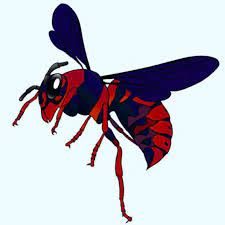By Clay Dubberly, Editor-In-Chief
On the eve before Halloween, Oct. 30, freshman Lenny Falwell said “we are going to shoot everybody we can possibly find.”
But he didn’t mean what you might think. Lenny and over a hundred other Shenandoah University students participated in an intense campus-wide game called “Humans versus Zombies,” wreaking havoc across SU during the nearly week-long battle for survival.
If you were walking to class and saw a student either taunting a Nerf gun or donning a bandana from Oct. 26-31, the odds have it that they were participants in this frantic struggle for control. Heaven forbid that you crossed the two at the same time; the only thing you could have done then was avoid the crossfire.
The game — though to some it was definitely more — began when a single human was chosen to be an “Original Zombie,” or O.Z., tasked with feeding on (tagging) humans. From then, the O.Z. had to infect as many humans as possible so they could join the ranks of the undead. Zombies survive by feasting on human flesh, and if any zombie went 48 hours without a meal they starved to death.
According to the story behind the game, on Oct. 26, humans posted patrols across campus and zombies took the offense. Four “critically injured” newcomers were transported onto SU’s campus via helicopter, and they held vital intelligence that would help turn the tide of the war. The four humans were dropped off at Halpin-Harrison Hall, the Health and Life Sciences building, Aikens, and the parking lot near Parker. Several human commando teams were sent on a rescue mission to bring each newcomer to the SU sign in the middle of campus. Most would call it a suicide mission, but the humans prevailed.
However, they later discovered that one of the four newcomers contained an airborne strain of the virus, and no one was safe. Humans began getting picked off and turning, and for a while the zombies held the upper hand.
On Oct. 27, human forces received a care package which was dropped off at the SU sign, and they retrieved the content of the package with minimal casualties.
A special mission was given to humans on Oct. 28: two of the world’s leading scientists were being flown to SU to work on their antidote and administer it to victims of the disease. Humans served as a security detail for the scientists once they arrived.
The scientists added the finishing touches to their remedy, and on Oct. 29, Thursday, the cure was released to the public. A small number of zombies were revived that night.
Tensions were high on Friday, Oct. 30. Zombies were spotted outside of the Allen Dining Hall in large groups. Nick Morris, a freshman and member of the zombie force, said that “The mission doesn’t matter. We just need to eliminate as many humans as possible by tomorrow.”
Human regiments were forced to change their plans concerning a rescue mission, and a commando was parachuted down and met by a small squad of humans who assisted in killing the mutated zombie. This enabled an airborne cure to be released on campus.
When the dust settled and the cracking of guns in the distance ceased, you could still find the vestiges of a violent and fresh war. Nerf bullets, socks and bandanas were scattered throughout campus. But now, students can go to class without worrying about getting caught in any type of crossfire.
Nick Serbu, a sophomore and veteran of HvZ, said that he felt “much more involved this year in the daily grind of the game, getting to and from classes and helping teammates get places they needed to go.” Now that HvZ is over, “it’s a big sigh of relief from the tension of having to have your guns out at any moment when a zombie may come at you, but the rush of adrenaline was a lot of fun when it happened,” Nick says.
The humans may have won, if only by a hair. But rumors are circulating among halls of academia concerning a possibility that the virus might resurface next year.
Categories: Arts, Campus News

